What Is a Straight Stairlift?
A straight stairlift is a mobility device installed on a staircase with no turns or landings. The chair or perch travels along a single straight rail from the bottom to the top of the stairs. The rail is mounted to the stair treads rather than the wall and is trimmed during installation to fit the length of the staircase.
Straight stairlifts are the most common and cost-effective solution for homes with a single straight flight of stairs. Because the rail is a pre-manufactured straight track that is cut to match the length of the staircase, material and labor typically stay lower than with custom curved systems.
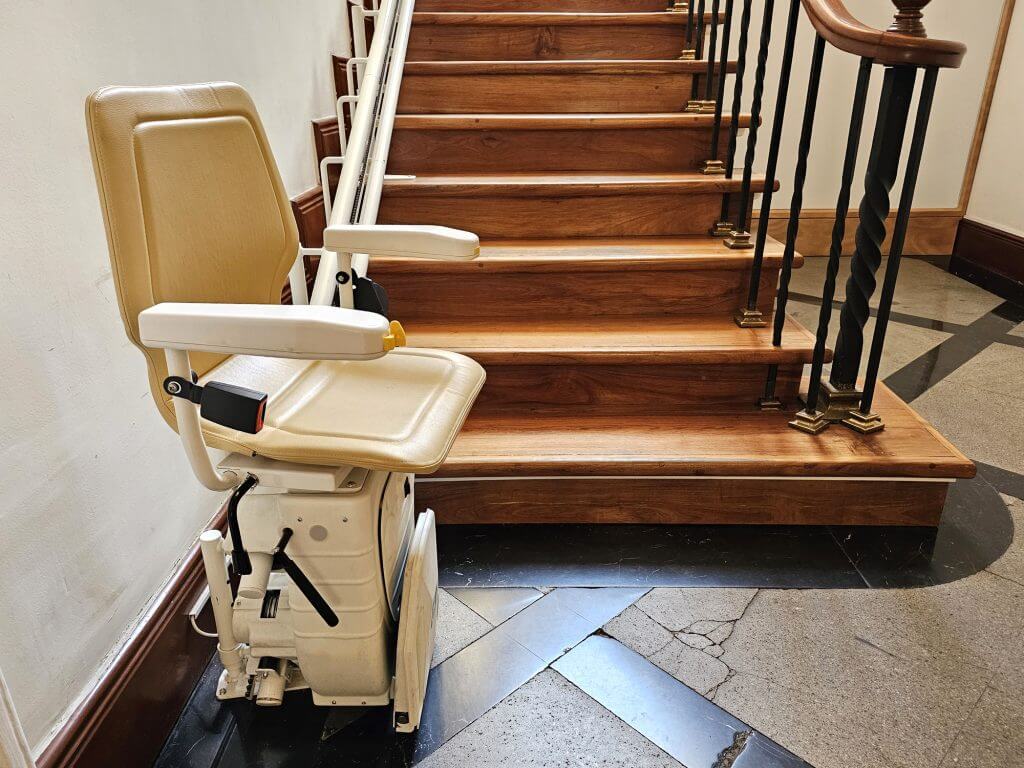
Key Characteristics
- Single Straight Rail: Travels on one uninterrupted rail without curves or switches, simplifying design and maintenance.
- Pre-Fabricated Footprint: Uses standardized rail components trimmed to the correct length, avoiding custom manufacturing.
- Quick Installation: Typically installed in a few hours due to the simple rail structure.
- Cost Efficiency: Offers the lowest price point in the stairlift category with strong day-to-day reliability.
Straight vs. Curved Stairlifts
- Rail Design: Straight lifts use a single linear rail; curved lifts require custom rails shaped to turn corners or landings.
- Cost: Straight systems typically range from $2,500 to $7,000 installed, while curved systems often cost significantly more.
- Timeline: Straight lifts can be installed quickly, while curved models may take weeks to manufacture and prepare.
- Best Use Case: Straight stairlifts are ideal for uninterrupted, single-flight staircases. Homes with multiple turns may require curved rails or multiple lifts.
How Much Does it Cost to Install a Straight Stairlift?
Installing a straight stairlift typically costs between $2,500 and $7,000 in total, including both equipment and professional labor. Most homeowners find that installation alone adds about $500 to $1,500 to the project, depending on stair length, home layout, and any optional features selected.
Average Cost Range
- Equipment: $2,000 to $5,500
- Installation: $500 to $1,500
- Total Installed Cost: $2,500 to $7,000 or more, depending on brand, features, and stair length
What Affects Cost?
- Rail Length and Staircase Height: Longer and steeper staircases require more material and labor.
- Weight Capacity: Standard lifts support 250 to 300 lbs; heavy-duty versions supporting 350 to 400+ lbs cost more.
- Seat Style and Comfort Upgrades: Enhanced cushions, adjustable arm widths, and perch-style seats or standing stairlift units add to pricing.
- Power and Battery Features: Battery backup is standard; upgrades like power swivel seats or folding footrests increase cost.
- Brand and Warranty Coverage: Premium brands cost more but often include advanced safety features or extended warranties.
- Installation Complexity: Narrow stairs, limited landing space, or unique architectural features may require added labor.
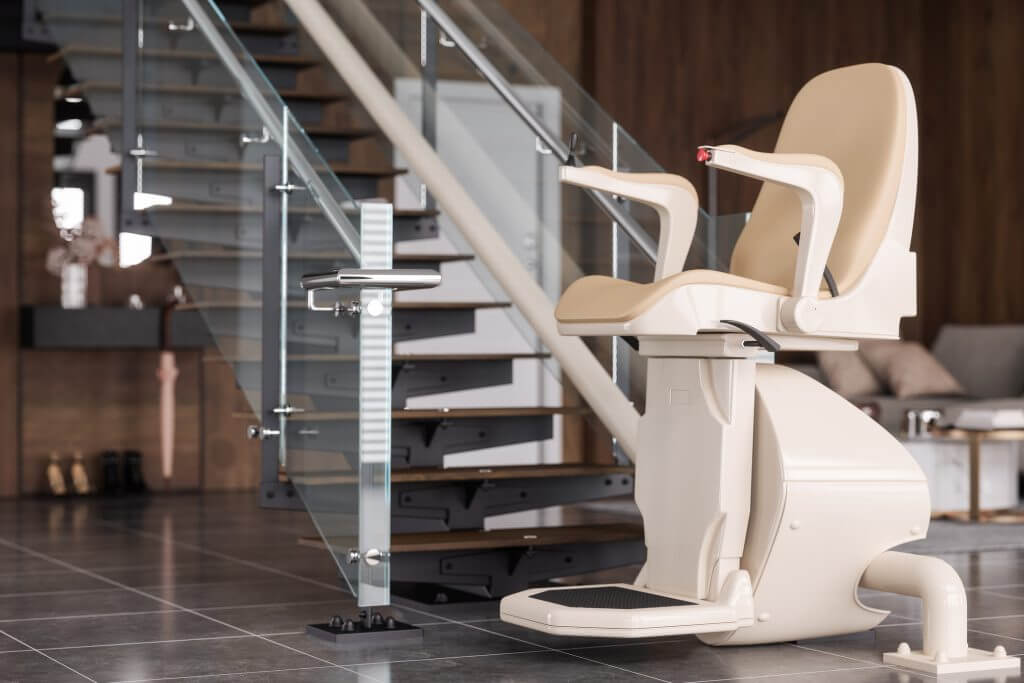
Cost Comparison: Straight vs. Curved
Straight stairlifts are the most budget-friendly option because they do not require custom rails. Homeowners installing straight lifts typically see far lower prices than with curved systems.
Straight Stairlift Costs by Brand & Features
| Brand | Typical Equipment Cost Range* | Key Features / Add-Ons | Notes |
|---|---|---|---|
| Bruno | $4,000 to $11,000 | Slim rail design, 300-400 lb capacity, indoor/outdoor versions, power swivel seat option | High-end brand; strong warranty. |
| Stannah | $3,000 to $7,000+ | UK-heritage manufacturer, customizable seat colors, indoor/outdoor compatible, up to ~350 lb capacity | Widely available U.S. network. |
| Handicare | $2,500 to $6,000 | Straight and curved lifts, dual remotes, battery backup standard, strong safety features | Good value brand. |
| Harmar | $3,000 to $8,000+ | Heavy-duty capacity models (up to ~600 lb in straight lifts), outdoor options, broad customization | Premium heavy-duty market. |
* Equipment cost is for the lift unit only, before installation and taxes.
Add-On Costs and Considerations
- Power Swivel Seat: +$300 to +$600 depending on model.
- Folding Rail (for tight bottom landing): +$200 to +$500.
- Outdoor Rated Version: +$500 to +$1,000 due to weather sealing.
- Heavy-Duty Capacity Upgrade (e.g., 400-600 lb): variable; can add $500 to $1,000+.
- Remote Call/Send Stations: Often included, but extra stations may cost $150 to $300 each.
- Extended Warranty/Service Plan: Usually $150 to $400/year depending on coverage.
Where Can You Install a Straight Stairlift?
Straight stairlifts are intended for staircases running continuously from one floor to the next without interruptions. They’re versatile and can be installed in many areas of the home if structural and clearance requirements are met.
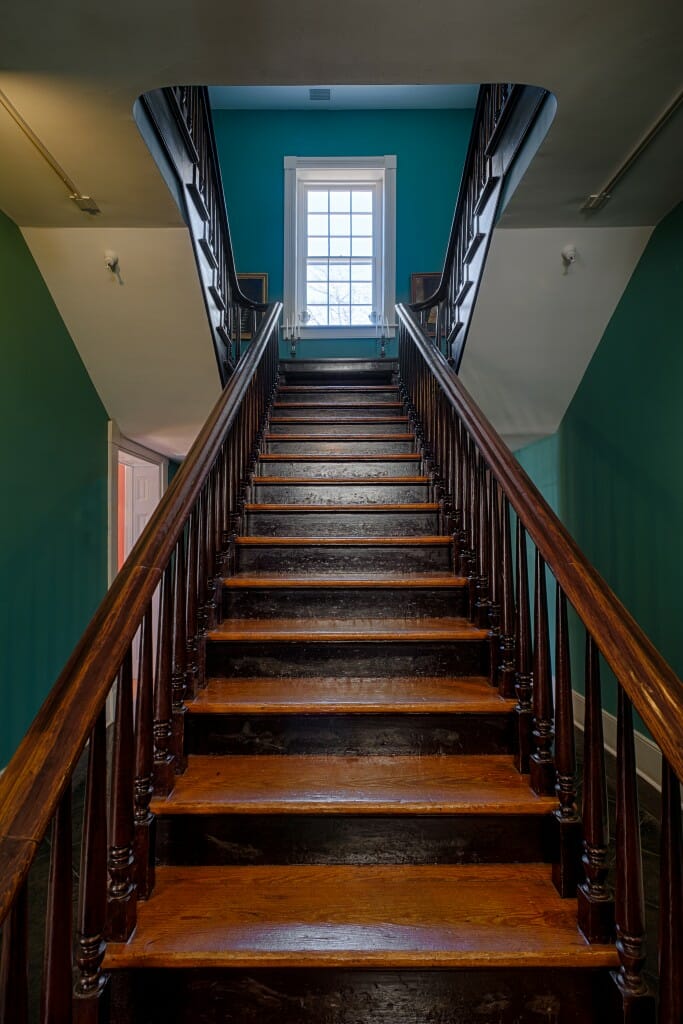
Straight Stairlift Compatible Staircases
- Indoor Straight Staircases: The most common installation, between main floors or to a basement.
- Basement or Attic Access Stairs: Suitable if the staircase is stable, wide enough, and free of obstructions.
- Outdoor Straight Stairs: Possible with weather-resistant models designed for exterior use.
Installation Requirements
- Stair Width Minimums: Many models require at least 28 to 30 inches of width; slim-rail models may fit narrower stairs.
- Landing Space: Adequate room must exist at both landings for safe entry and exit.
- Electrical Access: A nearby outlet is needed for the lift’s charging system.
- Clearance and Obstacles: Rail placement must avoid blocking walkways, door swings, radiators, or protruding trim.
Outdoor Use
- Weather-Resistant Materials: Outdoor lifts include corrosion-resistant rails, sealed electronics, and UV-resistant seating.
- Protective Covers: Many include fitted covers to protect the seat and controls.
- Enhanced Sealing: Motors, batteries, and wiring are sealed to protect against moisture and debris.
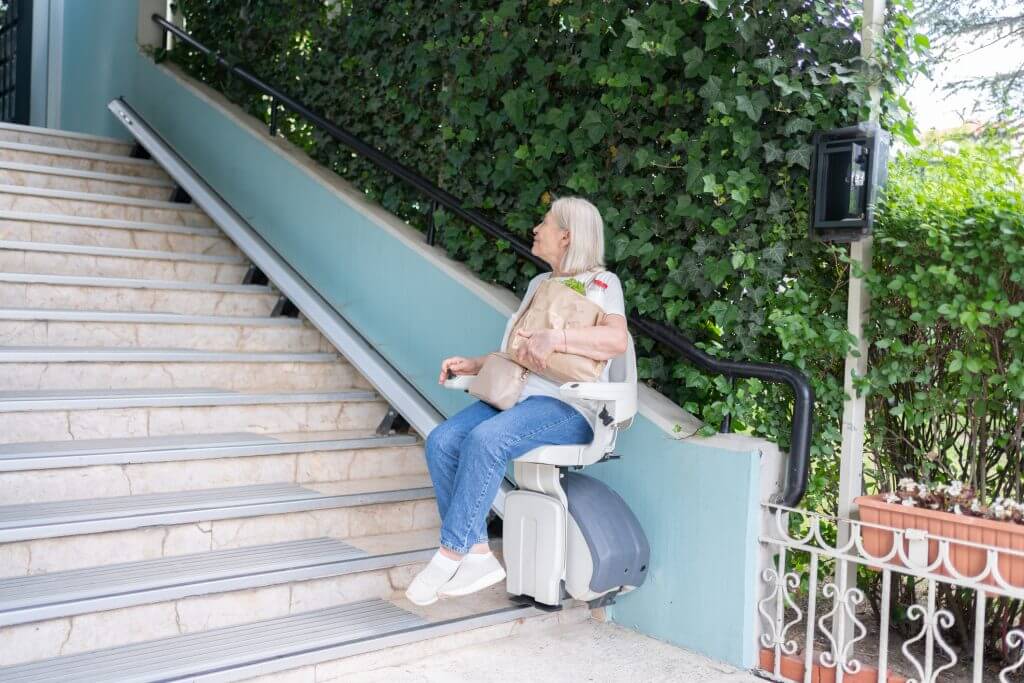
DIY or Professional Installation
Some straight stairlifts are marketed for DIY installation, but professional installation remains the safest and most reliable option.
DIY Installation
- Advantages: Lower upfront cost and quicker turnaround if you are mechanically experienced.
- Disadvantages: Warranty coverage may be limited; higher risk of misalignment, incomplete safety checks, or improper wiring.
Professional Installation
- Safety and Compliance: Technicians ensure proper rail mounting, weight limitations, and sensor functionality.
- System Calibration: Travel limits, speed, and braking are adjusted for smooth operation.
- Warranty Protection: Most warranties require certified installation.
- User Training: Installers typically demonstrate proper operation and safety procedures.
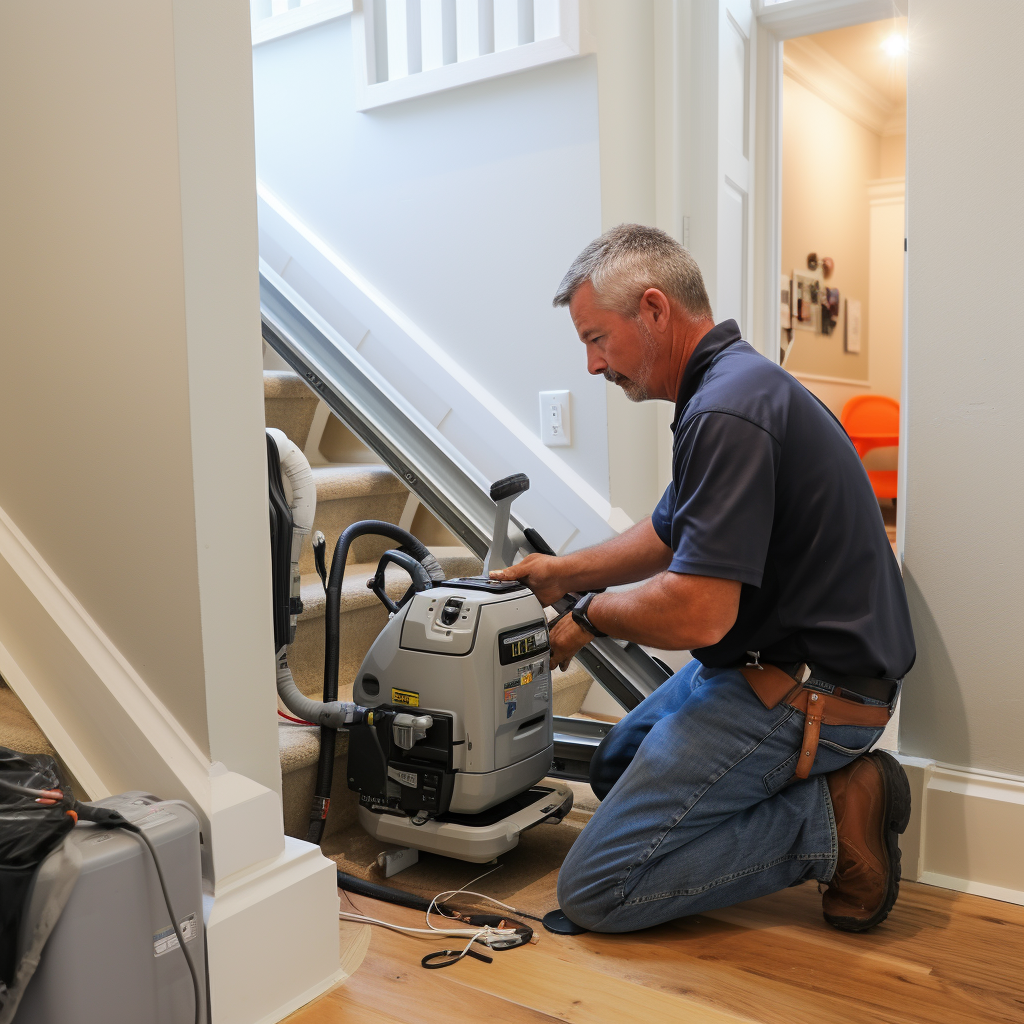
Who Is a Straight Stairlift Best Suited For?
Straight stairlifts suit homeowners with a single straight staircase and mobility limitations that make climbing stairs unsafe or difficult. They are widely used by older adults aging in place, individuals recovering from injuries, and users experiencing pain or limited stamina on stairs.
Users should generally be able to sit and stand with some stability. Perch-style seating may be available for those who cannot bend their knees comfortably.
Things to Consider When Looking Into Straight Stairlifts
- User Strength and Mobility: Consider physical ability, balance, and ability to secure the belt and operate controls.
- Staircase Geometry: The staircase must be straight with sufficient width and unobstructed movement.
- Power and Charging Location: Confirm where the lift will plug in and whether parking at top or bottom is preferred.
- Weight and Size of the User: Choose a lift with a suitable weight limit and comfortable seat dimensions.
- Maintenance and Service Access: Understand service availability and the cost of replacement parts such as batteries.
- Multiple Users and Controls: Consider call/send features and ease of access for all household members.
- Aesthetics and Stair Access: Fold-up seating may help preserve stair access for others.
- Resale or Relocation: Some lifts can be relocated; ask about buy-back or trade-in options.
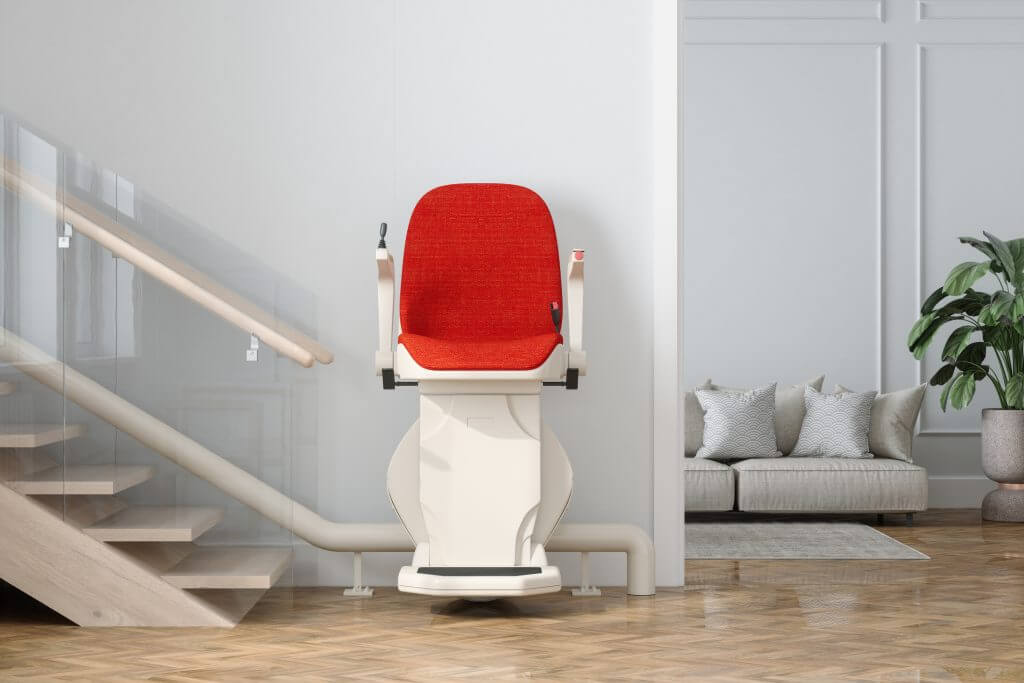
Is a Straight Stairlift Right for Me?
A straight stairlift is often the most practical and affordable mobility enhancement for two-level homes with a single straight stair run. It can restore independence, reduce fall risk, and extend the ability to live comfortably at home. A home assessment from a stairlift professional is the best way to confirm whether a straight stairlift suits your staircase and mobility needs.
Modernize Review Hub
Looking for best brands and brand-specific stairlift information? Check out the Modernize Review Hub for our complete offerings of stairlift review information, including brands and installers!
Compare top-rated stair lifts pros in your area.
Read real homeowner reviews, explore qualifications, and view promotions. Modernize makes it easy to browse professionals and find one that will be perfect for your project.





